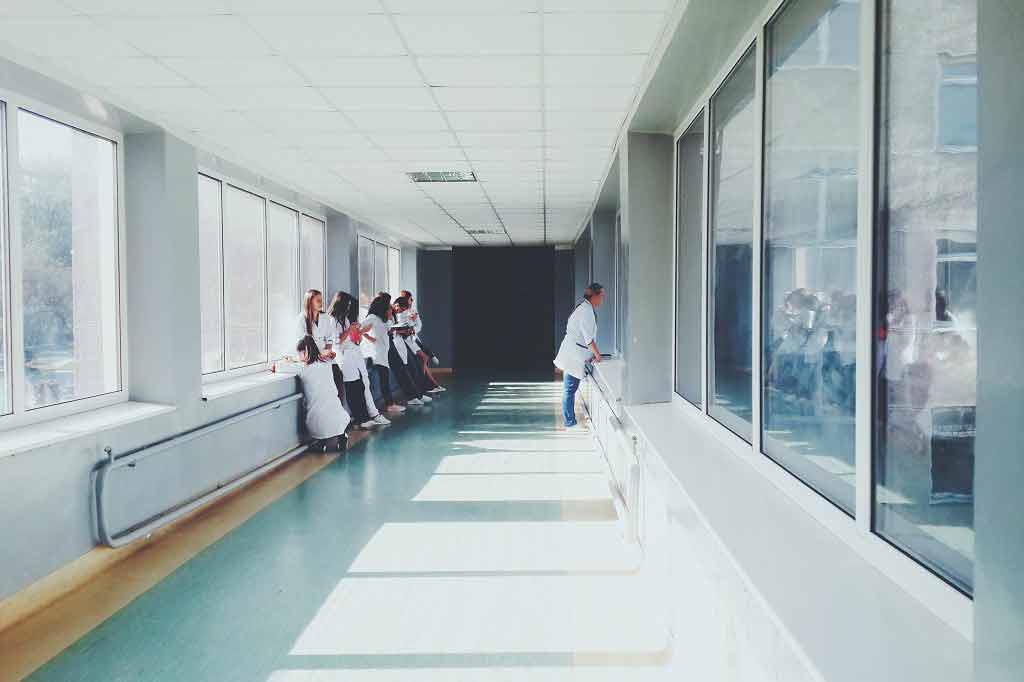Effect of MRSA screening
Medical practice
“A quick test for the drug-resistant bacterium MRSA has helped a London hospital to cut infection rates by almost 40% in a single year,” according to The Times. The
“A quick test for the drug-resistant bacterium MRSA has helped a London hospital to cut infection rates by almost 40% in a single year,” according to The Times .
The newspaper reported on the study of a trial screening programme that tested all patients admitted for surgery for MRSA. Those who tested positive were entered into a screening and suppression programme to 'decolonise' them (i.e. to suppress the bacteria they are carrying) before their surgery.
The study compared the rates of MRSA infection in the blood and in wounds during 2006 with the infection rates of previous years. It provides a snapshot of the effects of early testing and preventative measures in one hospital in London.
As the study was not a randomised controlled trial, the change in infection rates cannot conclusively be attributed to the screening and suppression programme. Other factors influencing infection rates may have changed over the years. Although the researchers admit this in the news article, they also suggest that such a screening programme combined with more rapid treatment to suppress MRSA is cost effective, particularly when infection rates are high. It would be possible to carry out a randomised trial to see whether routine testing really can reduce infection rates in addition to other common approaches.
In November 2007, the annual report by the Health Protection Agency (HPA) showed a 10% decrease in cases of MRSA compared to last years figures. They also reported that since 2001, there has been a 12% overall drop in reported cases.
At present, patients admitted to hospital are not all routinely tested for MRSA, but suspected infections are tested and treated accordingly. More information on hospital infections and the drive to eradicate avoidable MRSA can be found at the Clean, Safe Care website.
Meanwhile, it was reported in August 2007 that a hospital in Kent would begin routinely screening patients for MRSA, and in September, the healthcare watchdog in Scotland (NHS Quality Improvement Scotland) called for the screening of patients who are admitted to hospital to be standardised.
Where did the story come from?
Dr Keshtgar and colleagues from University College London Hospitals Foundation Trust carried out this research. It is not clear who provided the funding for the study. Becton Dickinson, the manufacturers of the test, funded production of a video presentation for the benefit of patients and staff. The study was published in the peer-reviewed British Journal of Surgery.
What kind of scientific study was this?
This before and after study compared the rates of MRSA infection at the University College London Hospitals Foundation Trust, before and after an MRSA screening and treatment programme was introduced.
In 2006, all patients admitted to the hospital for critical care, or routine or emergency surgery were tested for MRSA on admission. Patients that were MRSA positive underwent a procedure to reduce the amount of MRSA they were carrying five days before their surgery. The procedure involved using an antibiotic ointment in both nostrils three times a day, antiseptic bodywash (containing chlorhexidine), antiseptic shampoo on days one, three, and five and changing clothing and bed linen every day. Where needed, antibiotics were prescribed and a wound surveillance team kept a close eye on the patients after surgery and for one to two months after hospital discharge.
The researchers determined whether there was a reduction in MRSA rates in blood and wound samples in the hospital during 2006 and how much money was saved over that year, while taking into account the costs of the testing. Their cost calculations were based on how much the hospital usually spent on treating a case of bacteraemia (an MRSA blood infection) or other wound infection.
What were the results of the study?
During 2006, there was a 39% reduction in MRSA bacteraemia (blood infection with MRSA) compared to 2005. MRSA wound infection rates improved by 28% in the same period.
The screening and suppression programme was calculated to cost about £300,000 a year for the hospital and by reducing the average number of days that patients stayed in hospital beds (3.78 beds a year) the researchers estimated the saving to be £276,000 a year (when compared to the average annual cost for the previous six years). The overall saving to the hospital varied depending on the year used for comparison, but reached £545,500 when 2006 was compared with 2005 alone.
What interpretations did the researchers draw from these results?
The authors say that their study has shown that an MRSA screening programme, although costly, can reduce the rates of MRSA bacteraemia and may result in savings (due to treatments averted) that could make it cost effective.
What does the NHS Knowledge Service make of this study?
The study design meant there are limits to its interpretation. The observed change in MRSA rates may not necessarily be a direct result of the screening programme. This is because the study is not a randomised controlled trial. Other factors, such as a natural change in infection rates may be responsible. The HPA reported that MRSA infection rates have been falling since 2003/2004 with a large reduction reported in 2006. The reduction in MRSA bacteraemia rates seen in this study may be reflecting that.
Screening and suppression strategies for reducing surgical infection rates have to be rigorously evaluated before they can be accepted as common practise. Assessing the feasibility and broad cost effectiveness of a strategy that rapidly identifies MRSA carriers, as this study did, is a reasonable place to start.
Sir Muir Gray adds...
This looks promising, but does not reduce the case for handwashing.






 Subscribe
Subscribe Ask the doctor
Ask the doctor Rate this article
Rate this article Find products
Find products








